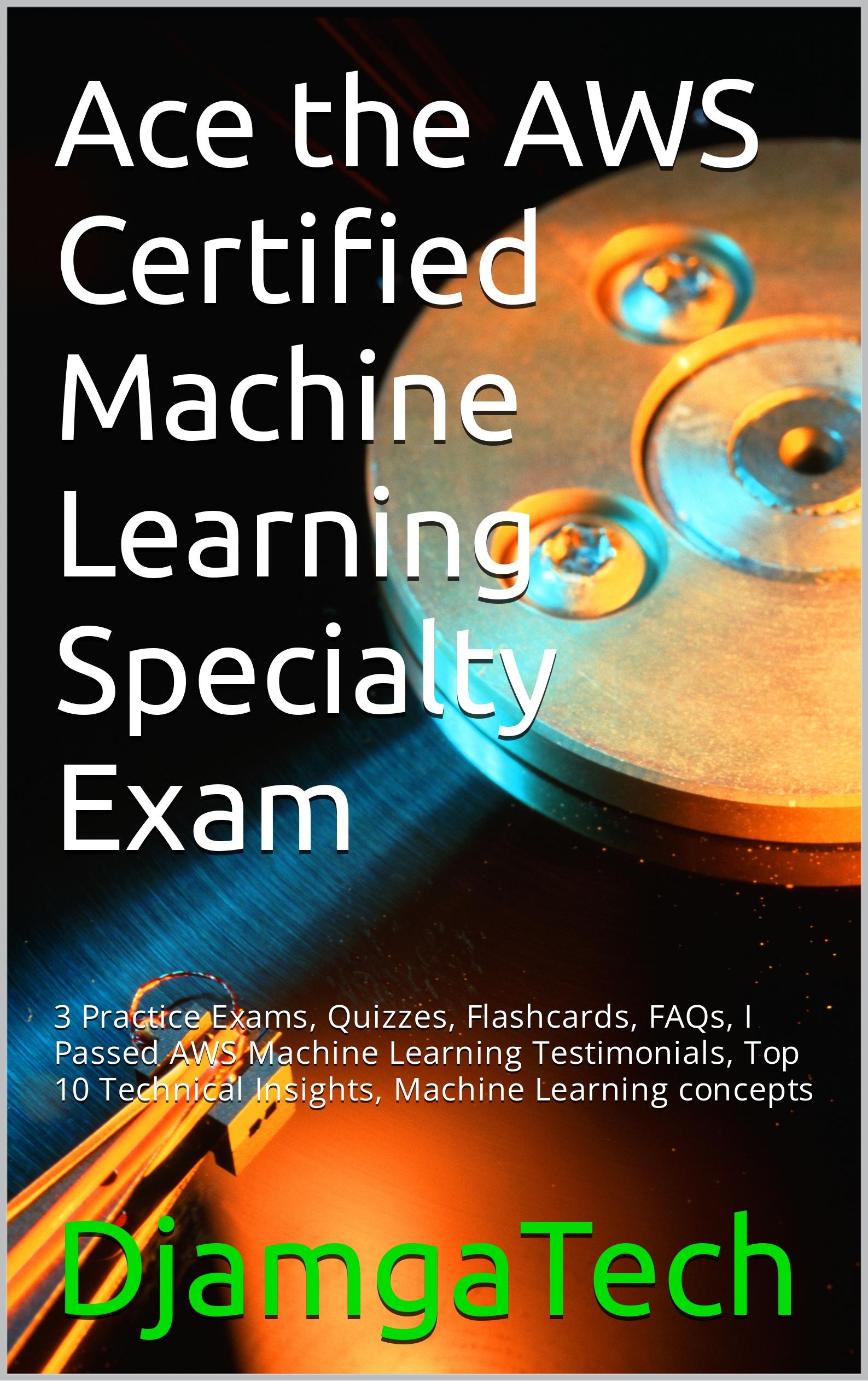What are some practical applications of machine learning that can be used by a regular person on their phone?
Machine learning is no longer something only used by tech giants and computer experts, but has many practical applications that the average person can take advantage of from their smartphone. From facial recognition to sophisticated machine learning algorithms that help with day-to-day tasks, Artificial Intelligence (AI) powered machine learning technology has opened up a world of possibilities for regular people everywhere. Whether it’s a voice assistant helping you make appointments and track down important information or automatic text translations that allow people to communicate with those who speak a foreign language, machine learning makes performing various tasks much simpler — a bonus any busy person would be thankful for. With the booming machine learning industry continuing to grow in leaps and bounds, it won’t be long until the power of AI is accessible in our pockets.

There are many practical applications of machine learning (ML) that can be used by regular people on their smartphones. Some examples include:
- Virtual assistants: Many smartphones now include virtual assistants such as Siri, Alexa, and Google Assistant that can use ML to respond to voice commands, answer questions, and perform tasks.
- Image recognition: ML-based image recognition apps can be used to identify and label objects, animals, and people in photos and videos.
- Speech recognition: ML-based speech recognition can be used to transcribe speech to text, dictate text messages and emails, and control the phone’s settings and apps.
- Personalized news and content: ML-based algorithms can be used to recommend news articles and content to users based on their reading history and interests.
- Social media: ML can be used to recommend users to connect with, suggest posts to like, and filter out irrelevant or offensive content.
- Personalized shopping: ML-based algorithms can be used to recommend products and offers to users based on their purchase history and interests.
- Language Translation: Some apps can translate text, speech, and images in real-time, allowing people to communicate effectively in different languages. Read Aloud For Me
- Personalized health monitoring: ML-based algorithms can be used to track and predict user’s sleep, activity, and other health metrics.

Speech Synthesizer, Take Notes and Save via voice, No tracking, Secure, Read For Me without tracking me.
These are just a few examples of the many practical applications of ML that can be used by regular people on their smartphones. As the technology continues to advance, it is likely that there will be even more ways that people can use ML to improve their daily lives.
What are some potential ethical issues surrounding uses of Machine Learning and artificial Intelligence techniques?
There are several potential ethical issues surrounding the use of machine learning and artificial intelligence techniques. Some of the most significant concerns include:
- Bias: Machine learning algorithms can perpetuate and even amplify existing biases in the data they are trained on. This can lead to unfair or discriminatory outcomes, especially in areas such as lending, hiring, and criminal justice.
- Transparency: The inner workings of some machine learning models can be complex and difficult to understand, making it difficult for people to know how decisions are being made and to hold organizations accountable for those decisions.
- Privacy: The collection, use, and sharing of personal data by machine learning models can raise significant privacy concerns. There are also concerns about the security of personal data and the potential for it to be misused.
- Unemployment: As automation and artificial intelligence become more advanced, there is a risk that it will displace human workers, potentially leading to unemployment and economic disruption.
- Autonomy: As AI and Machine Learning systems become more advanced, there are questions about the autonomy of these systems, and how much control humans should have over them.
- Explainability: ML systems used in decision making can be seen as “black boxes” that is hard to understand how they arrive to certain decision. This can make it harder to trust the outcomes.
- Accountability: As AI and ML systems become more prevalent, it will be crucial to establish clear lines of accountability for the decisions they make and the actions they take.
These are just a few examples of the ethical issues surrounding the use of machine learning and artificial intelligence. It is important for researchers, developers, and policymakers to work together to address these issues in a responsible and thoughtful way.
What are some examples of applications for artificial neural networks in business?
Artificial neural networks (ANNs) are a type of machine learning algorithm that are modeled after the structure and function of the human brain. They are well-suited to a wide variety of business applications, including:
- Predictive modeling: ANNs can be used to analyze large amounts of data and make predictions about future events, such as sales, customer behavior, and stock market trends.
- Customer segmentation: ANNs can be used to analyze customer data and group customers into segments with similar characteristics, which can be used for targeted marketing and personalized recommendations.
- Fraud detection: ANNs can be used to identify patterns in financial transactions that are indicative of fraudulent activity.
- Natural language processing: ANNs can be used to analyze and understand human language, which allows for applications such as sentiment analysis, text generation, and chatbot.
- Image and video analysis: ANNs can be used to analyze images and videos to detect patterns and objects, which allows for applications such as object recognition, facial recognition, and surveillance.
- Recommender systems: ANNs can be used to analyze customer data and make personalized product or content recommendations.
- Predictive maintenance: ANNs can be used to analyze sensor data to predict when equipment is likely to fail, allowing businesses to schedule maintenance before problems occur.
- Optimization: ANNs can be used to optimize production processes, logistics, and supply chain.
These are just a few examples of how ANNs can be applied to business, this field is constantly evolving and new use cases are being discovered all the time.
How do you explain the concept of supervised and unsupervised learning to a non-technical audience?
Supervised learning is a type of machine learning where a computer program is trained using labeled examples to make predictions about new, unseen data. The idea is that the program learns from the labeled examples and is then able to generalize to new data. A simple analogy would be a teacher showing a student examples of math problems and then having the student solve similar problems on their own.
For example, in image classification, a supervised learning algorithm would be trained with labeled images of different types of objects, such as cats and dogs, and then would be able to identify new images of cats and dogs it has never seen before.
On the other hand, unsupervised learning is a type of machine learning where the computer program is not given any labeled examples, but instead must find patterns or structure in the data on its own. It’s like giving a student a set of math problems to solve without showing them how it was done. For example, in unsupervised learning, an algorithm would be given a set of images, and it would have to identify the common features among them.
A good analogy for unsupervised learning is exploring a new city without a map or tour guide, the algorithm is on its own to find the patterns, structure, and relationships of the data.
Are decision trees better suited for supervised or unsupervised learning and why?
Decision trees are primarily used for supervised learning, because they involve making decisions based on the labeled training data provided. Supervised learning is a type of machine learning where an algorithm is trained on a labeled dataset, where the correct output for each input is provided.
In a decision tree, the algorithm builds a tree-like model of decisions and their possible consequences, with each internal node representing a feature or attribute of the input data, each branch representing a decision based on that attribute, and each leaf node representing a predicted output or class label. The decision tree algorithm uses this model to make predictions on new, unseen input data by traversing the tree and following the decisions made at each node.
Advertise with us - Post Your Good Content Here
We are ranked in the Top 20 on Google
AI Dashboard is available on the Web, Apple, Google, and Microsoft, PRO version
While decision trees can be used for unsupervised learning, it is less common. Unsupervised learning is a type of machine learning where the algorithm is not provided with labeled data and must find patterns or structure in the data on its own. Decision trees are less well suited for unsupervised learning because they rely on labeled data to make decisions at each node and therefore this type of problem is generally solved with other unsupervised techniques.
In summary, decision trees are better suited for supervised learning because they are trained on labeled data and make decisions based on the relationships between features and class labels in the training data.
Can machine learning make a real difference in algorithmic trading?
Yes, machine learning can make a significant difference in algorithmic trading. By analyzing large amounts of historical market data, machine learning algorithms can learn to identify patterns and make predictions about future market movements. These predictions can then be used to inform trading strategies and make more informed decisions about when to buy or sell assets. Additionally, machine learning can be used to optimize and fine-tune existing trading strategies, and to detect and respond to changes in market conditions in real-time.
These are the two areas where machine learning can take over:
- Swing finding: intermediate highs and lows.
- Position sizing: actually this is a subset of position sizing. Sometimes, pairs like EURTRY go nowhere for a long time. Rather than piss money away, it makes sense to penalize (reduce) position sizing on certain pairs and increase others.
- Asset allocation and risk management. It can also aid a discretionary trader in picking important factors to consider.
How does technology like facial recognition influence how we understand and use surveillance systems?
Facial recognition technology, which uses algorithms to analyze and compare facial features in order to identify individuals, has the potential to greatly influence how we understand and use surveillance systems. Some of the ways in which this technology can influence the use of surveillance include:
- Increased surveillance: Facial recognition technology can enable more accurate and efficient identification of individuals, which can result in increased surveillance in public spaces and private businesses.
- Privacy concerns: The use of facial recognition technology raises concerns about privacy and civil liberties, as it could enable widespread surveillance and tracking of individuals without their knowledge or consent.
- Biased performance: There have been concerns that facial recognition systems can have a biased performance, particularly when it comes to identifying people of color, women, and children. This can lead to false arrests and other negative consequences.
- Misuse of the technology: Facial recognition technology can be misused by governments or companies for political or financial gain, or to repress or discriminate against certain groups of people.
- Legal challenges: There are legal challenges on the use of facial recognition technology, as it raises questions about the limits of government surveillance and the protection of civil liberties.
Facial recognition technology is a powerful tool that has the potential to greatly enhance the capabilities of surveillance systems. However, it’s important to consider the potential consequences of its use, including privacy concerns and the potential for misuse, as well as the ethical implications of the technology.
Active Hydrating Toner, Anti-Aging Replenishing Advanced Face Moisturizer, with Vitamins A, C, E & Natural Botanicals to Promote Skin Balance & Collagen Production, 6.7 Fl Oz


Age Defying 0.3% Retinol Serum, Anti-Aging Dark Spot Remover for Face, Fine Lines & Wrinkle Pore Minimizer, with Vitamin E & Natural Botanicals


Firming Moisturizer, Advanced Hydrating Facial Replenishing Cream, with Hyaluronic Acid, Resveratrol & Natural Botanicals to Restore Skin's Strength, Radiance, and Resilience, 1.75 Oz

Skin Stem Cell Serum


Smartphone 101 - Pick a smartphone for me - android or iOS - Apple iPhone or Samsung Galaxy or Huawei or Xaomi or Google Pixel
Can AI Really Predict Lottery Results? We Asked an Expert.

Djamgatech

Read Photos and PDFs Aloud for me iOS
Read Photos and PDFs Aloud for me android
Read Photos and PDFs Aloud For me Windows 10/11
Read Photos and PDFs Aloud For Amazon
Get 20% off Google Workspace (Google Meet) Business Plan (AMERICAS): M9HNXHX3WC9H7YE (Email us for more)
Get 20% off Google Google Workspace (Google Meet) Standard Plan with the following codes: 96DRHDRA9J7GTN6(Email us for more)
FREE 10000+ Quiz Trivia and and Brain Teasers for All Topics including Cloud Computing, General Knowledge, History, Television, Music, Art, Science, Movies, Films, US History, Soccer Football, World Cup, Data Science, Machine Learning, Geography, etc....

List of Freely available programming books - What is the single most influential book every Programmers should read
- Bjarne Stroustrup - The C++ Programming Language
- Brian W. Kernighan, Rob Pike - The Practice of Programming
- Donald Knuth - The Art of Computer Programming
- Ellen Ullman - Close to the Machine
- Ellis Horowitz - Fundamentals of Computer Algorithms
- Eric Raymond - The Art of Unix Programming
- Gerald M. Weinberg - The Psychology of Computer Programming
- James Gosling - The Java Programming Language
- Joel Spolsky - The Best Software Writing I
- Keith Curtis - After the Software Wars
- Richard M. Stallman - Free Software, Free Society
- Richard P. Gabriel - Patterns of Software
- Richard P. Gabriel - Innovation Happens Elsewhere
- Code Complete (2nd edition) by Steve McConnell
- The Pragmatic Programmer
- Structure and Interpretation of Computer Programs
- The C Programming Language by Kernighan and Ritchie
- Introduction to Algorithms by Cormen, Leiserson, Rivest & Stein
- Design Patterns by the Gang of Four
- Refactoring: Improving the Design of Existing Code
- The Mythical Man Month
- The Art of Computer Programming by Donald Knuth
- Compilers: Principles, Techniques and Tools by Alfred V. Aho, Ravi Sethi and Jeffrey D. Ullman
- Gödel, Escher, Bach by Douglas Hofstadter
- Clean Code: A Handbook of Agile Software Craftsmanship by Robert C. Martin
- Effective C++
- More Effective C++
- CODE by Charles Petzold
- Programming Pearls by Jon Bentley
- Working Effectively with Legacy Code by Michael C. Feathers
- Peopleware by Demarco and Lister
- Coders at Work by Peter Seibel
- Surely You're Joking, Mr. Feynman!
- Effective Java 2nd edition
- Patterns of Enterprise Application Architecture by Martin Fowler
- The Little Schemer
- The Seasoned Schemer
- Why's (Poignant) Guide to Ruby
- The Inmates Are Running The Asylum: Why High Tech Products Drive Us Crazy and How to Restore the Sanity
- The Art of Unix Programming
- Test-Driven Development: By Example by Kent Beck
- Practices of an Agile Developer
- Don't Make Me Think
- Agile Software Development, Principles, Patterns, and Practices by Robert C. Martin
- Domain Driven Designs by Eric Evans
- The Design of Everyday Things by Donald Norman
- Modern C++ Design by Andrei Alexandrescu
- Best Software Writing I by Joel Spolsky
- The Practice of Programming by Kernighan and Pike
- Pragmatic Thinking and Learning: Refactor Your Wetware by Andy Hunt
- Software Estimation: Demystifying the Black Art by Steve McConnel
- The Passionate Programmer (My Job Went To India) by Chad Fowler
- Hackers: Heroes of the Computer Revolution
- Algorithms + Data Structures = Programs
- Writing Solid Code
- JavaScript - The Good Parts
- Getting Real by 37 Signals
- Foundations of Programming by Karl Seguin
- Computer Graphics: Principles and Practice in C (2nd Edition)
- Thinking in Java by Bruce Eckel
- The Elements of Computing Systems
- Refactoring to Patterns by Joshua Kerievsky
- Modern Operating Systems by Andrew S. Tanenbaum
- The Annotated Turing
- Things That Make Us Smart by Donald Norman
- The Timeless Way of Building by Christopher Alexander
- The Deadline: A Novel About Project Management by Tom DeMarco
- The C++ Programming Language (3rd edition) by Stroustrup
- Patterns of Enterprise Application Architecture
- Computer Systems - A Programmer's Perspective
- Agile Principles, Patterns, and Practices in C# by Robert C. Martin
- Growing Object-Oriented Software, Guided by Tests
- Framework Design Guidelines by Brad Abrams
- Object Thinking by Dr. David West
- Advanced Programming in the UNIX Environment by W. Richard Stevens
- Hackers and Painters: Big Ideas from the Computer Age
- The Soul of a New Machine by Tracy Kidder
- CLR via C# by Jeffrey Richter
- The Timeless Way of Building by Christopher Alexander
- Design Patterns in C# by Steve Metsker
- Alice in Wonderland by Lewis Carol
- Zen and the Art of Motorcycle Maintenance by Robert M. Pirsig
- About Face - The Essentials of Interaction Design
- Here Comes Everybody: The Power of Organizing Without Organizations by Clay Shirky
- The Tao of Programming
- Computational Beauty of Nature
- Writing Solid Code by Steve Maguire
- Philip and Alex's Guide to Web Publishing
- Object-Oriented Analysis and Design with Applications by Grady Booch
- Effective Java by Joshua Bloch
- Computability by N. J. Cutland
- Masterminds of Programming
- The Tao Te Ching
- The Productive Programmer
- The Art of Deception by Kevin Mitnick
- The Career Programmer: Guerilla Tactics for an Imperfect World by Christopher Duncan
- Paradigms of Artificial Intelligence Programming: Case studies in Common Lisp
- Masters of Doom
- Pragmatic Unit Testing in C# with NUnit by Andy Hunt and Dave Thomas with Matt Hargett
- How To Solve It by George Polya
- The Alchemist by Paulo Coelho
- Smalltalk-80: The Language and its Implementation
- Writing Secure Code (2nd Edition) by Michael Howard
- Introduction to Functional Programming by Philip Wadler and Richard Bird
- No Bugs! by David Thielen
- Rework by Jason Freid and DHH
- JUnit in Action
#BlackOwned #BlackEntrepreneurs #BlackBuniness #AWSCertified #AWSCloudPractitioner #AWSCertification #AWSCLFC02 #CloudComputing #AWSStudyGuide #AWSTraining #AWSCareer #AWSExamPrep #AWSCommunity #AWSEducation #AWSBasics #AWSCertified #AWSMachineLearning #AWSCertification #AWSSpecialty #MachineLearning #AWSStudyGuide #CloudComputing #DataScience #AWSCertified #AWSSolutionsArchitect #AWSArchitectAssociate #AWSCertification #AWSStudyGuide #CloudComputing #AWSArchitecture #AWSTraining #AWSCareer #AWSExamPrep #AWSCommunity #AWSEducation #AzureFundamentals #AZ900 #MicrosoftAzure #ITCertification #CertificationPrep #StudyMaterials #TechLearning #MicrosoftCertified #AzureCertification #TechBooks
Top 1000 Canada Quiz and trivia: CANADA CITIZENSHIP TEST- HISTORY - GEOGRAPHY - GOVERNMENT- CULTURE - PEOPLE - LANGUAGES - TRAVEL - WILDLIFE - HOCKEY - TOURISM - SCENERIES - ARTS - DATA VISUALIZATION

Top 1000 Africa Quiz and trivia: HISTORY - GEOGRAPHY - WILDLIFE - CULTURE - PEOPLE - LANGUAGES - TRAVEL - TOURISM - SCENERIES - ARTS - DATA VISUALIZATION

Exploring the Pros and Cons of Visiting All Provinces and Territories in Canada.

Exploring the Advantages and Disadvantages of Visiting All 50 States in the USA

Health Health, a science-based community to discuss health news and the coronavirus (COVID-19) pandemic
- US infant mortality increased in 2022 for the first time in decades, CDC report showsby /u/cnn on July 25, 2024 at 6:37 pm
submitted by /u/cnn [link] [comments]
- Study raises hopes that shingles vaccine may delay onset of dementia | Dementia | The Guardianby /u/chilladipa on July 25, 2024 at 3:38 pm
submitted by /u/chilladipa [link] [comments]
- How fit is your city? New rankings by the American College of Sports Medicineby /u/idc2011 on July 25, 2024 at 3:35 pm
submitted by /u/idc2011 [link] [comments]
- Twice-Yearly Lenacapavir or Daily F/TAF for HIV Prevention in Cisgender Women | New England Journal of Medicineby /u/chilladipa on July 25, 2024 at 3:30 pm
submitted by /u/chilladipa [link] [comments]
- Biden Made a Healthy Decisionby /u/theatlantic on July 25, 2024 at 3:15 pm
submitted by /u/theatlantic [link] [comments]
Today I Learned (TIL) You learn something new every day; what did you learn today? Submit interesting and specific facts about something that you just found out here.
- TIL actor John Larroquette was the uncredited narrator of the prologue to the 1974 horror movie Texas Chainsaw Massacre. In lieu of cash, he was paid by the Director Tobe Hooper in Marijuana.by /u/openletter8 on July 25, 2024 at 6:56 pm
submitted by /u/openletter8 [link] [comments]
- TIL that the every Shakopee Mdewakanton Sioux indian receives a payout of around $1 million per year from casino profits.by /u/friendlystranger4u on July 25, 2024 at 6:22 pm
submitted by /u/friendlystranger4u [link] [comments]
- TIL Motorcycles in China are dictated by law to be decommissioned and destroyed in 13 years after registration regardless of the conditionsby /u/Easy_Piece_592 on July 25, 2024 at 5:56 pm
submitted by /u/Easy_Piece_592 [link] [comments]
- TIL a man named Jonathan Riches has filed more than 2,600 lawsuits since 2006. He even sued Guinness World Records to try to stop them from titling him as "the most litigious man in history".by /u/doopityWoop22 on July 25, 2024 at 5:03 pm
submitted by /u/doopityWoop22 [link] [comments]
- TIL that in 2018, an American half-pipe skier qualified for the Olympics despite minimal experience. Olympic requirements stated that an athlete needed to place in the top 30 at multiple events. She simply sought out events with fewer than 30 participants, showed up, and skied down without falling.by /u/ctdca on July 25, 2024 at 4:28 pm
submitted by /u/ctdca [link] [comments]
Reddit Science This community is a place to share and discuss new scientific research. Read about the latest advances in astronomy, biology, medicine, physics, social science, and more. Find and submit new publications and popular science coverage of current research.
- Abstinence-only sex education linked to higher pornography use among women | This finding adds to the ongoing conversation about the effectiveness and impacts of different sexuality education approaches.by /u/chrisdh79 on July 25, 2024 at 6:49 pm
submitted by /u/chrisdh79 [link] [comments]
- AlphaProof and AlphaGeometry 2 AI models achieve silver medal standard in solving International Mathematical Olympiad problemsby /u/Big_Profit9076 on July 25, 2024 at 5:59 pm
submitted by /u/Big_Profit9076 [link] [comments]
- Scientists have described a new species of chordate, Nuucichthys rhynchocephalus, the first soft-bodied vertebrate from the Drumian Marjum Formation of the American Great Basin.by /u/grimisgreedy on July 25, 2024 at 5:55 pm
submitted by /u/grimisgreedy [link] [comments]
- Secularists revealed as a unique political force in America, with an intriguing divergence from liberals. Unlike nonreligiosity, which denotes a lack of religious affiliation or belief, secularism involves an active identification with principles grounded in empirical evidence and rational thought.by /u/mvea on July 25, 2024 at 5:40 pm
submitted by /u/mvea [link] [comments]
- New shingles vaccine could reduce risk of dementia. The study found at least a 17% reduction in dementia diagnoses in the six years after the new recombinant shingles vaccination, equating to 164 or more additional days lived without dementia.by /u/Wagamaga on July 25, 2024 at 4:48 pm
submitted by /u/Wagamaga [link] [comments]
Reddit Sports Sports News and Highlights from the NFL, NBA, NHL, MLB, MLS, and leagues around the world.
- A's place their lone all-star, Mason Miller, on IL with fractured finger after hitting training tableby /u/Oldtimer_2 on July 25, 2024 at 8:15 pm
submitted by /u/Oldtimer_2 [link] [comments]
- Flyers sign All-Star Travis Konecny to an 8-year extension worth $70 millionby /u/Oldtimer_2 on July 25, 2024 at 7:45 pm
submitted by /u/Oldtimer_2 [link] [comments]
- Bills’ Von Miller says he believes domestic assault case to be closed, with no charges filedby /u/Oldtimer_2 on July 25, 2024 at 7:43 pm
submitted by /u/Oldtimer_2 [link] [comments]
- Padres' Dylan Cease throws no-hitter vs. Nationalsby /u/Oldtimer_2 on July 25, 2024 at 7:41 pm
submitted by /u/Oldtimer_2 [link] [comments]
- Appeal denied in Valieva case; U.S. skaters to get gold in Parisby /u/PrincessBananas85 on July 25, 2024 at 6:18 pm
submitted by /u/PrincessBananas85 [link] [comments]

















 96DRHDRA9J7GTN6
96DRHDRA9J7GTN6